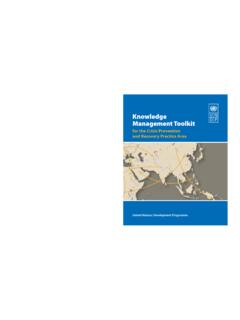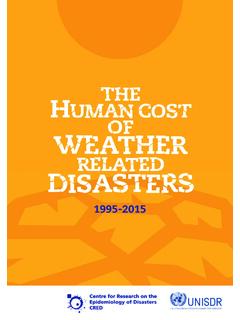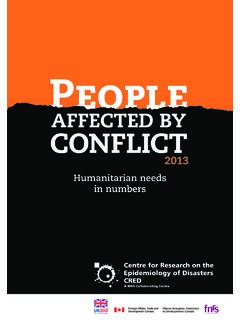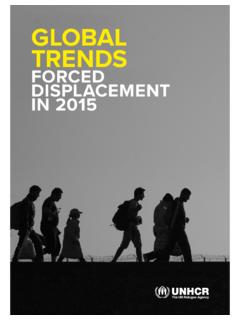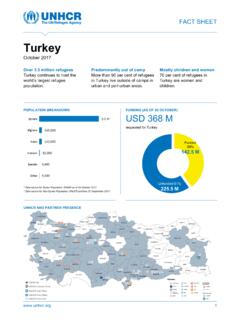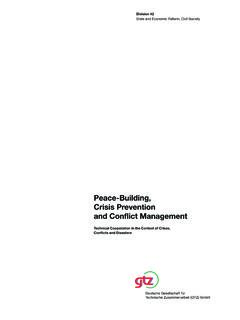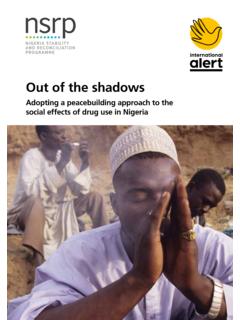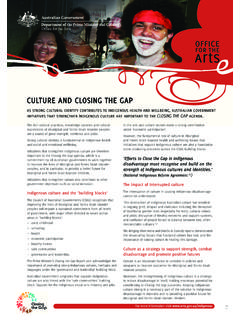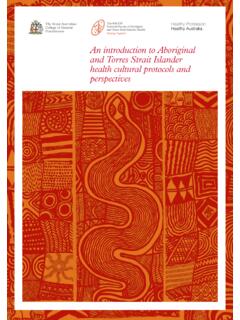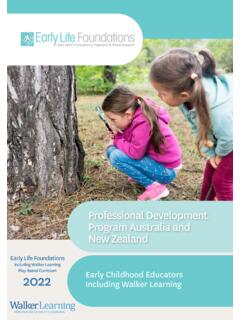Transcription of PHILIPPINES COVID-19 RESPONSE PLAN COVID-19 ... - …
1 1 PHILIPPINES COVID-19 RESPONSE PLANCOVID-19 HUMANITARIAN RESPONSE PLANPHILIPPINESMAY 11, 2020 REVISIONP hoto Credit: WHO/F. Tanggol2 PHILIPPINES COVID-19 RESPONSE PLANMETRO MANILAR esponse Plan OverviewPEOPLE IN NEEDPEOPLE TARGETEDREQUIREMENTS (US$) the spread of the COVID-19 pandemic and decrease morbidity and the deterioration of human assets and rights, social cohesion and , assist and advocate for displaced people, indigenous population and marginalized communities particularly vulnerable to the OBJECTIVEST arget Priority AreasCCCMN utritionWASHE arly RecoveryEducationProtection inc GBV and CPFSACH ealth inc.
2 SRHT arget Population (in million) by COVID-19 RESPONSE PLANThe world is facing a global crisis unlike any since World War II, one that is spreading human suffering, infecting the global economy and upending people s lives. This is a moment that demands coordinated, decisive and innovative action from all parts of society. While recognizing the urgency to address the global scale and complexity of the crisis, this document outlines the manner in which the humanitarian community in the PHILIPPINES is coming together in a coordinated and inclusive way to support the government-led RESPONSE efforts in RESPONSE to the COVID-19 pandemic as well as socioeconomic needs emerging in its present version1 of the Humanitarian country Team (HCT)
3 COVID-19 RESPONSE Plan is focused on providing health interventions and multi-sectoral assistance to the poorest and most marginalized communities directly impacted by the epidemic, particularly focusing on the safety and wellbeing of women and girls. While the activitiesIntroduction_____ 1 This is an update of the first HCT COVID-19 RESPONSE Plan released on 3 April. 2 Available at in the plan focus on the most immediate challenges, the overall strategy spans until the end of the year and the document will be periodically updated to keep up with the unique and evolving nature of this crisis, mindful of the importance of early recovery and interventions appropriate to the context of a middle income economy characterised by high levels of inequality, marginalized communities and displacement driven by natural hazards and PHILIPPINES has also been included in the revised Global Humanitarian RESPONSE Plan2.
4 Reflecting broader COVID-19 needs in already vulnerable humanitarian contexts.(See the final page for a description of the Humanitarian country Team in the PHILIPPINES , its leadership and member organizations and networks)Photo Credit: WHO/F. Tanggol4 PHILIPPINES COVID-19 RESPONSE PLANS ituation Overview and Needs Analysisnationwide have been impacted by COVID-19 quarantine measures, with million losing income due to temporary closures of establishments while over 600,000 report reduced incomes from modified working arrangements. With key contributors to GDP such as tourism and remittances from Overseas Filipino Workers (OFW) directly impacted, the socioeconomic consequences of the pandemic will exacerbate existing inequalities and add to social tensions in areas subject to armed pandemic is also exposing and deepening gender inequality.
5 Women in particular are losing not only their paid employment, many also face a huge increase in care work at home due to school closures, overwhelmed health systems and the increased needs of older was quick to roll out cash assistance programmes for affected workers, though in late April the labor department announced that it had to cease giving grants with its funds close to depletion. Most of the affected workers are in Metro Manila and Regions III and IV-A, where 90 per cent of the total COVID-19 cases nationwide have occurred, and which normally contribute at least 60 per cent to the gross domestic Central Bank of the PHILIPPINES has forecast zero to -1 per cent economic growth this year, although this is a moving target as the global impact of the pandemic works its way through interconnected economies, the imminent repatriation of some 40,000 OFWs.
6 While COVID-19 is expected to affect most aspects of the economy, it will deepen inequalities among the most at-risk evolution of the situation and needsThe health sector, economy and the overall population will need to prepare for a new normal , with increased awareness of hygiene, personal protection measures and additional strains on mental health and nutritional status of vulnerable populations. Confirmed COVID-19 cases will continue to rise due to improved laboratory testing capacities. While hospitals will continue to require critical care areas, training support and equipment to care for severely ill patients, communities will need to understand how to provide care for mild cases at home and in community-based isolation units.
7 Individuals and communities will also need to learn effective infection prevention and control measures necessary to prevent further spread of planning assumption until the end of the year is the gradual relaxation of movement restrictions and a gradual reopening of the economy after the lifting of enhanced community quarantine. Humanitarian needs will be most acute in the first few months, followed by socio-economic needs that will particularly affect most vulnerable communities. Frontloading the humanitarian RESPONSE will give way to socioeconomic recovery and subsequent transition toOn 30 January 2020, the World health Organization (WHO) declared Public health Emergency of International Concern (PHEIC) for novel coronavirus, after the Chinese authorities confirmed that they identified a novel (new) coronavirus ( COVID-19 ) in Wuhan January, the first three cases were recorded in the PHILIPPINES , all with confirmed travel history to Wuhan City.
8 On 5 March, a first case of COVID-19 with no travel history abroad was confirmed, indicating the presence of local of 10 May3, 10,794 cases of COVID-19 have been confirmed in the PHILIPPINES and 696 deaths. According to WHO, among the confirmed cases, 5,929 are male (53%) and 5,089 are female (47%). The mostaffected age group is 30-39 (20%).Public health impactWhile everyone is at risk to be infected by COVID-19 , elder people and persons with pre-existing conditions such as diabetes, hypertension, heart and respiratory diseases or with compromised immune systems, including people with HIV, as well as frontline health workers, are the most vulnerable.
9 People at risk of infection are also those living in poor, densely populated urban settings and any community with inadequate access to proper hygiene supplies and with constrained hygiene and sanitation practices and nutrition a lower middle-income country , the PHILIPPINES exemplifies the challenges of a health system in transition. The COVID-19 pandemic puts additional strain on already overwhelmed health system in a country with ongoing measles, dengue and polio outbreaks and against the background of the triple burden of malnutrition. For example, stringent social distancing measures and community quarantine have had significant impact on polio outbreak RESPONSE activities, postponing vaccination campaigns and disrupting nutrition shortage of personal protective equipment (PPE), ventilators, intensive care and other critical equipment is affecting the ability of health facilities to treat COVID-19 patients.
10 Almost 20% of all those infected in the country are health workers. Initially, some hospitals in the National Capital Region (NCR) stopped accepting patients because they were unable to provide adequate protection for their health workers without PPE. health facilities in Mindanaoare particularly affected by the lack of PPE and many health workers are currently self-quarantining after they came in close contact with COVID-19 cases without wearing adequate impactThe pandemic is having a significant disruptive impact on the economy and will negatively impact growth well beyond 2020. According to the labor department, more than two million workers _____ 3 See WHO PHILIPPINES website for regular updates: COVID-19 RESPONSE PLAN continuing development interventions.

